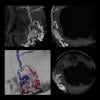Akshay Khandelwal, M.D., director of medical operations at the Henry Ford Heart and Vascular Institute, Detroit, and associate professor of cardiology at Wayne State University, explains how his center has reduced X-ray radiation dose in the cardiac catheterization labs.
Watch the related VIDEO: Reducing Cath Lab Radiation Dose at Henry Ford Hospital — Discussion with Nicolas Bevins, Ph.D., vice chair, physics and research, and Jessica Harrington, RCIS, Henry Ford Hospital.
Additional articles and videos on Henry Ford Hospital
For more on how to reduce dose in the cath lan, read these related articles:
Cardiology Societies Call for Better Radiation Dose Tracking
Defining the Cath Lab Workplace Radiation Safety Hazard
Dose-Lowering Practices for Cath Lab Angiography
5 Technologies to Reduce Cath Lab Radiation Exposure
VIDEO: Heart Surgeon Shares Effects of Fluoroscopic Radiation Exposure
Helping Interventional Cardiologists Reduce Exposure to Ionizing Radiation
14 Ways to Reduce Radiation Exposure in the Cath Lab
(Editor's note - this video was originally published in November 2018 and was revised September 2019)








































